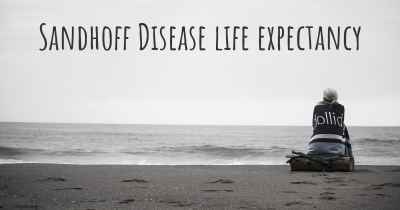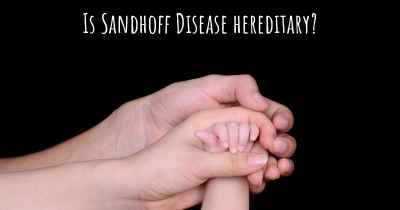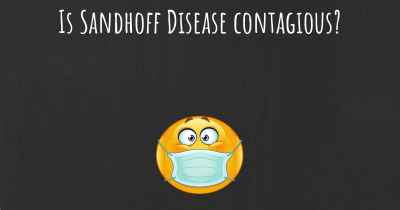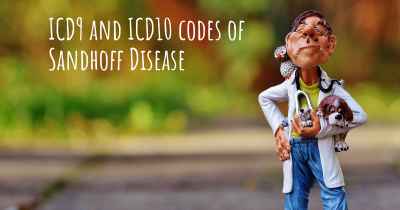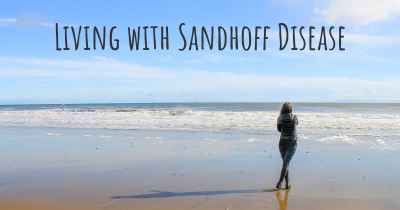What are the latest advances in Sandhoff Disease?
Here you can see the latest advances and discoveries made regarding Sandhoff Disease.
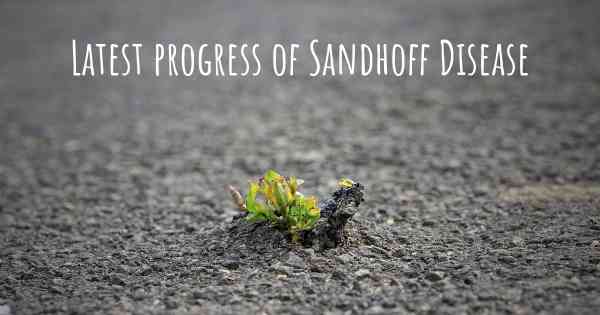
Sandhoff Disease:
Sandhoff disease, also known as GM2 gangliosidosis type II, is a rare genetic disorder that belongs to a group of diseases called lysosomal storage disorders. It is an autosomal recessive disorder, meaning that both parents must carry a mutated gene for the disease to be passed on to their child. Sandhoff disease is characterized by the accumulation of harmful substances, specifically GM2 gangliosides, in the cells of the brain and spinal cord.
Signs and Symptoms:
The symptoms of Sandhoff disease typically appear in infancy or early childhood and progressively worsen over time. The disease affects the central nervous system, leading to neurodegeneration. Common symptoms include:
- Progressive muscle weakness
- Loss of motor skills
- Seizures
- Cherry-red spot in the eye
- Intellectual disability
- Developmental regression
- Difficulty swallowing
- Increased startle response
Current Treatment Options:
Currently, there is no cure for Sandhoff disease, and treatment options focus on managing the symptoms and improving the quality of life for affected individuals. Supportive care is provided to address specific symptoms and complications. This may include:
- Physical therapy to maintain mobility and muscle strength
- Occupational therapy to assist with daily activities
- Speech therapy to address difficulties with swallowing and communication
- Medications to manage seizures
- Respiratory support if breathing difficulties arise
Recent Advances:
Despite the challenges posed by Sandhoff disease, there have been notable advances in research and potential treatment options. Here are some recent developments:
- Gene Therapy: Gene therapy holds promise for the treatment of Sandhoff disease. Researchers are exploring the use of viral vectors to deliver a functional copy of the HEXB gene, which is responsible for producing the enzyme that is deficient in individuals with Sandhoff disease. Preclinical studies in animal models have shown promising results, and clinical trials are being planned to assess the safety and efficacy of gene therapy in humans.
- Enzyme Replacement Therapy (ERT): Enzyme replacement therapy involves administering the missing enzyme directly into the body to compensate for the deficiency. While ERT has been successful in treating some lysosomal storage disorders, it has proven challenging for Sandhoff disease due to the inability of the enzyme to cross the blood-brain barrier. However, researchers are investigating novel approaches to enhance enzyme delivery to the brain, such as modifying the enzyme or utilizing alternative delivery methods.
- Small Molecule Therapies: Small molecule therapies aim to target specific pathways involved in the disease progression. Researchers are exploring various compounds that could potentially reduce the accumulation of GM2 gangliosides or alleviate the symptoms associated with Sandhoff disease. These compounds may act by enhancing the activity of residual enzyme, reducing substrate production, or modulating cellular processes affected by the disease.
Conclusion:
Sandhoff disease remains a challenging condition with limited treatment options. However, recent advances in gene therapy, enzyme replacement therapy, and small molecule therapies offer hope for potential future treatments. Ongoing research and clinical trials are crucial in further understanding the disease and developing effective interventions to improve the lives of individuals affected by Sandhoff disease.
